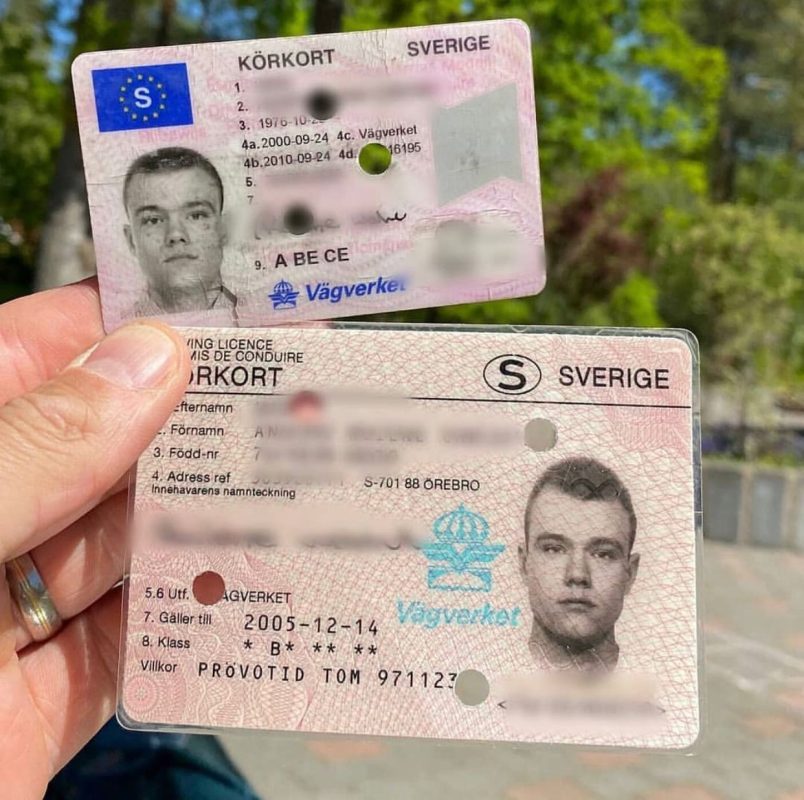7 Simple Secrets To Totally Rolling With Your Driving License Id-Handl…
페이지 정보
작성자 Jonathon 작성일 25-08-10 13:54 조회 17 댓글 0본문
The Future of Driving Licenses: ID Handling in 2025
As innovation continues to develop at an unprecedented rate, different sectors are embracing innovations to improve user experience and efficiency. Among the locations experiencing substantial change is identity management, especially concerning driving licenses. With the intro of digital licenses and advanced recognition methods, the landscape of driving license ID handling is anticipated to undergo substantial changes by 2025. This article explores the expected developments in driving license ID handling, the implications for users, and answers regularly asked concerns about the future of driving licenses.

The Evolution of Driving Licenses
Driving licenses have typically worked as a method of recognizing a person's authority to run a motor vehicle. They likewise serve several secondary purposes, consisting of age verification and identity confirmation for banking and travel. Nevertheless, the physical card system has constraints, consisting of threats of counterfeiting, loss, and out-of-date information. As society gravely relies on efficient and safe recognition systems, the transition toward digital licenses is ending up being significantly popular.
Current Trends in Driving License ID Handling
Digital Licenses: Many states are piloting digital driving licenses that allow users to store their qualifications on their mobile phones. These digital licenses are created with sophisticated security functions, consisting of biometric data, and can be scanned or shared firmly.
Blockchain Technology: Some jurisdictions are exploring blockchain to enhance the security and credibility of driving licenses. This technology makes sure that information can not be damaged which the data is easily proven.
Facial Recognition: Increasingly utilized in recognition practices, facial recognition innovation can expedite the process of validating an individual's identity versus their driving license. This technology likewise helps in reducing scams and maintain the integrity of the licensing systems.
Multi-Functional Licenses: Future driving licenses might incorporate extra features such as health records, travel paperwork, and even payment systems, supplying a detailed identity service.
The Benefits of Digital Driving Licenses by 2025
The shift towards digital driving licenses presents several benefits, including:
Convenience: Users can access their licenses anytime, which gets rid of the requirement for physical cards. This is particularly beneficial when individuals forget their license, as digital copies can be recovered quickly.
Security: Advanced security steps can minimize the threat of identity theft, scams, and unauthorized duplication. Digital licenses frequently consist of encryption and biometric confirmation.
Performance: Reduced wait times at federal government workplaces and during traffic stops, as law enforcement can verify digital licenses instantly.
Implications for Users
While the improvements in driving license ID managing present numerous benefits, they also include difficulties. Users require to adjust to brand-new innovation and ensure they comprehend the changes and their ramifications. Here are some considerations:
Privacy Concerns: With increased digital footprints, there will be heightened concerns over data personal privacy and how biometric data is stored and utilized.
Accessibility Issues: Individuals without access to mobile phones or digital innovations might deal with barriers to obtaining and making use of digital licenses.
Regulative Compliance: With different jurisdictions embracing different systems and processes, users must know their regional laws concerning digital licenses and recognition.
Prepared For Changes in Driving License ID Handling by 2025
| Aspect | Present Status | Expected Change by 2025 |
|---|---|---|
| License Format | Physical cards | Mainly digital licenses |
| Confirmation Process | Manual checks | Automated biometric verification |
| Security Measures | Standard holograms and features | Advanced encryption and blockchain |
| Jurisdictional Differences | Fragmented procedures throughout states | More standardized national systems |
| User Interaction | In-person renewals and checks | Mobile applications for management |
Frequently asked questions
1. What is a digital driving license?A digital driving license is an electronic variation of a standard driving license that is saved on a mobile gadget. It can be used for recognition and confirmation in numerous circumstances, with improved security features to prevent fraud.
2. How will digital licenses boost security?Digital licenses make use of encryption and biometric data, making them harder to forge or abuse compared to standard cards. In addition, blockchain innovation can make sure information credibility and stability.
3. Will everyone be needed to switch to a digital license?While numerous jurisdictions are moving toward digital licenses, guidelines might differ. Users are encouraged to talk to their regional licensing authorities for Online körkort particular guidelines.
4. What are the potential downsides of digital licenses?Some prospective drawbacks include personal privacy concerns regarding information storage, accessibility problems for individuals without smart devices or digital literacy, and the requirement for a robust regulatory structure to manage security and user rights.
5. How can I get ready for the shift to digital licenses?Stay notified about regional initiatives relating to digital licenses, check out readily available mobile applications for handling recognition, and cultivate digital literacy to browse new innovations with confidence.
The future of driving licenses and ID handling is poised for significant evolution by 2025. As digital licenses become more prevalent, users will experience improved security, convenience, and performance. However, along with the advantages come challenges that will need public awareness and adaptation. Stakeholders should prioritize education, policy, and availability to ensure a smooth transition that empowers individuals with the identification tools of the future. As technology advances, so too will the techniques through which society manages identity, especially vital in processes as essential as running an automobile.
댓글목록 0
등록된 댓글이 없습니다.

